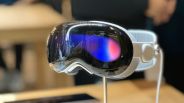A groundbreaking brain implant has given a 69-year-old paralyzed man the ability to steer a virtual drone solely with his thoughts—a new achievement in assistive technology.
The cutting-edge development could potentially unlock a whole new world of independence and participation for millions who live with severe physical impairments.
How the Brain Implant Works
According to the UK-based online newspaper The Independent, the innovative implant was surgically placed in the man's precentral gyrus, the region of the brain that controls hand movement. This device constantly monitors electrical activity in the brain, particularly those signals associated with complex physical movements.
To create this revolutionary technology, researchers followed a meticulous process:
- The participant observed a virtual hand performing various finger movements.
- The implant recorded nerve cell activity during these observations.
- The data was decoded through artificial intelligence algorithms linked to specific finger movements in the brain.
This enabled researchers to create an interface where the participant could use the virtual hand through the use of distinct finger groups and two-dimensional thumb movements with precision.
From Finger Movements to Drone Control
Based on this achievement, researchers developed a quadcopter video game with the technology. Decoded finger movements were now used to make the virtual drone speed up or change direction in the game.
The volunteer completed the task and navigated a quadcopter through obstacles with random ring appearances. Such an achievement shows that the system can decode complicated brain signals to execute accurate and real-time action, something unachievable before with existing BCIs.
A New Hope for People with Paralysis
Millions of individuals worldwide face significant limitations due to paralysis. This brain implant technology offers more than just physical control—it provides a sense of empowerment, recreation, and social connectivity.
The participant in the study described feelings of enablement, expressing how the experience addressed key unmet needs, including the desire for interaction and recreation.
"There's a lot of things that we enjoy or do as humans where we use multiple individuated finger movements, so like typing, sewing, playing a musical instrument," study co-author Matthew Willsey, a neurosurgeon at the University of Michigan in Ann Arbor said.
Potential Applications Beyond Gaming
This technology would mean more than piloting virtual drones. Eventually, as they continue to be developed, such brain implants might allow paralyzed individuals to accomplish things such as:
- Moving cursors on a computer screen.
- Type emails.
- Go through social media.
- Stream programs or control appliances.
- Decoding finger movements might even make activities such as playing the piano or entering highly complex virtual reality, possible.
AI played a vital role in this breakthrough and there's no question about that. Identifying the pattern of activity within the brain and correlating them to particular finger movements with AI helped reach unprecedented accuracy and flexibility.
Marking a potential doorway for the restoration of independence to paralyzed people, this brain implant has been crowned as a very promising breakthrough. First, it enables the patient to deal with digital environments and perform highly precise actions in them.
As research continues, scientists will try to perfect these implants even further, potentially integrating them with more advanced AI systems and wearable devices. The ultimate goal? To make the impossible a reality for those living with physical limitations.
To view the full study, visit Nature.com for more details.
ⓒ 2025 TECHTIMES.com All rights reserved. Do not reproduce without permission.


![Best Gaming Mouse For Gamers With Smaller Hands [2025]](https://d.techtimes.com/en/full/461466/best-gaming-mouse-gamers-smaller-hands-2025.png?w=184&h=103&f=6fd057ef777bd39251d4e7e82e9b23f1)


